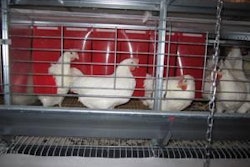The rapid rate of change in the economic, social and political factors that affect egg producers has probably never been more rapid. Growth in the biofuels industry, fueled by both high crude oil prices and government programs, has driven grain and animal fat prices to record-high levels. High crop prices have increased demand for farm land and fertilizer, driving up the price of phosphates.
Animal welfare concerns appear to be pushing the egg industry away from traditional cages to enriched colonies or cage-free production. Whether using enriched colonies or cage-free housing, the capital cost per hen housed will increase significantly above current levels. While at the same time, Salmonella control programs are putting increased emphasis on pest control, which may hasten a move away from deep-pit to manure belt houses. Finally, the cost savings of inline egg-packing has been driving a move to larger farms.
Even if the growth in the biofuels industry was largely the result of government largesse, the genie is out of the bottle, and with high crude oil prices the genie isn’t going back in. The same is true in regards to housing. Now that the industry has endorsed enriched colony housing, a transition away from traditional cages will take place; it is just a matter of when.
Change has already started for some egg producers. On a recent trip to Michigan to visit Konos Inc., I drove by a number of egg farms that were constructing new buildings with enrichable colony systems being installed. The same is true in a number of other states. According to the equipment suppliers, there is a mini housing boom underway right now as producers expand to prepare for converting existing housing at a later date.
I don’t know for sure what the egg industry will look like 10 or 20 years down the road, but I do know that it will be different from what we see today. Adam Smith’s invisible hand will be affecting each and every decision that producers make, and the cumulative affect of these decisions may surprise us all.


















